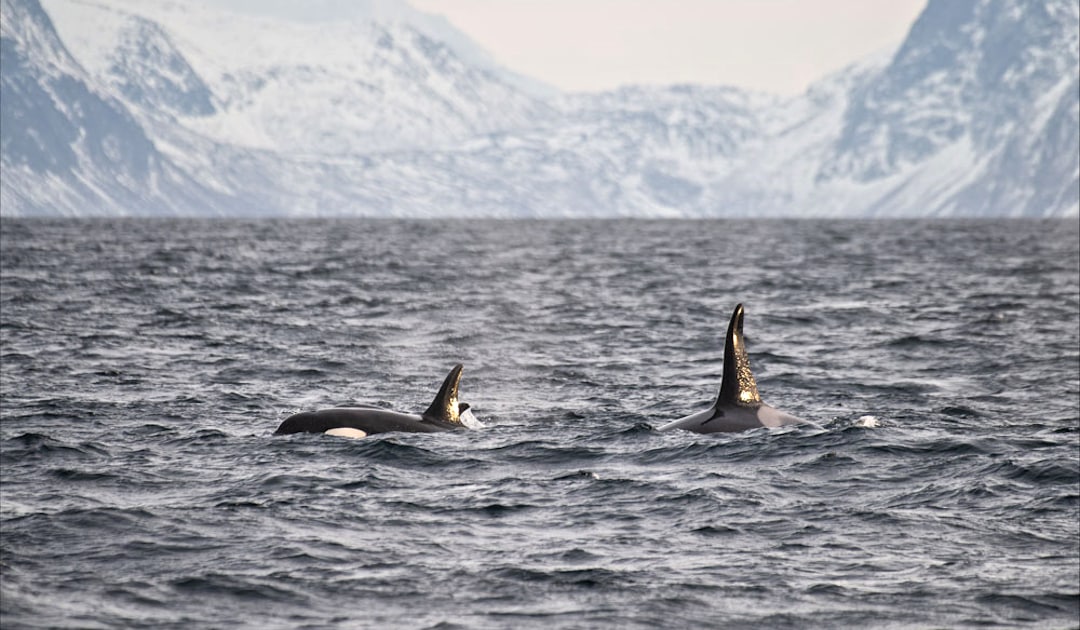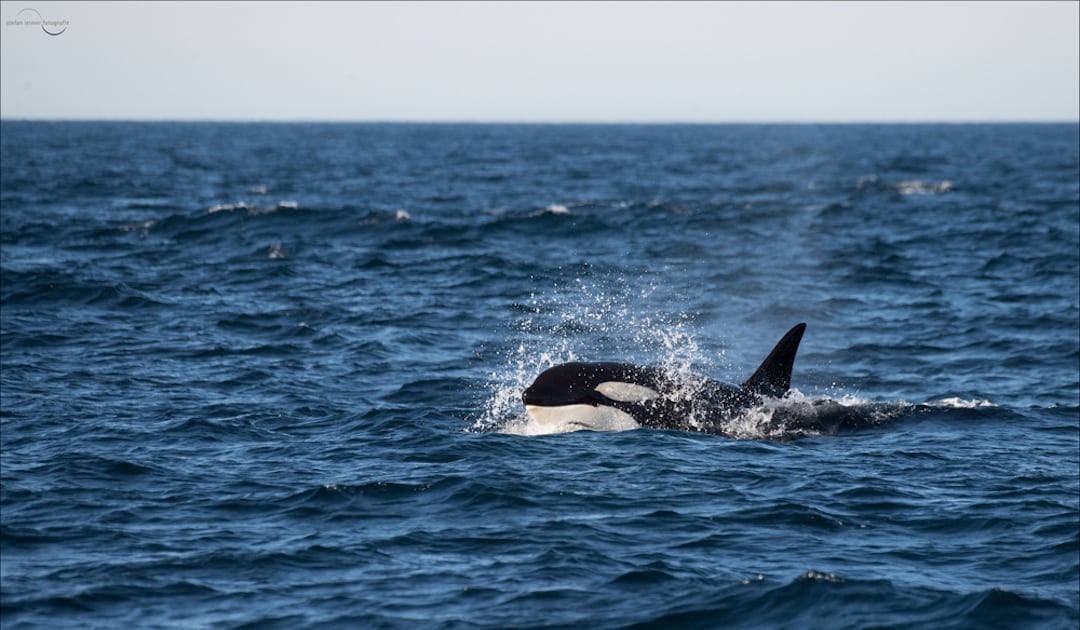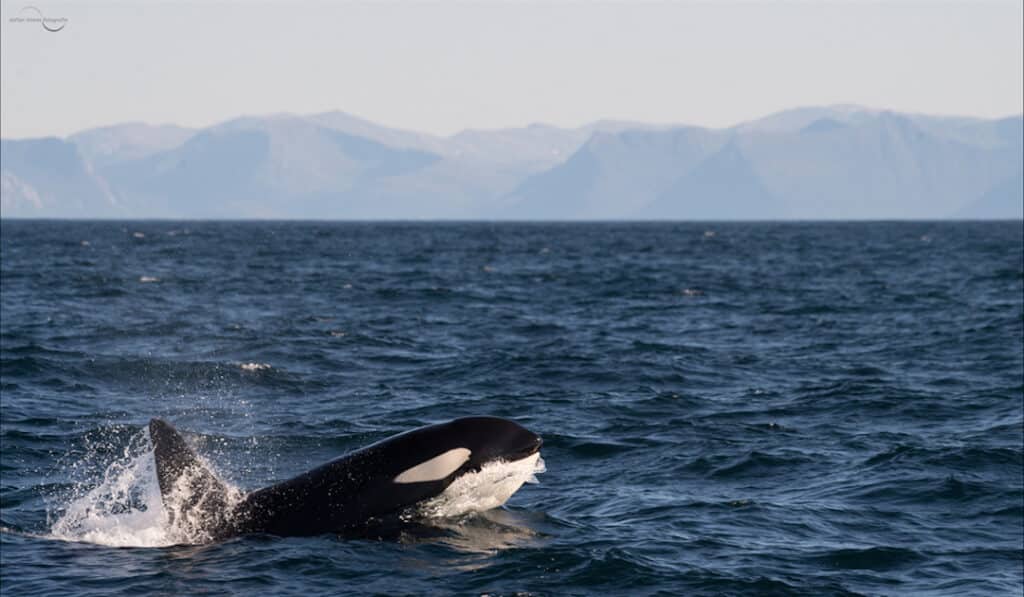
Orcas are native to all oceans and move with their clans from food source to food source. They are led by a female animal and the group is held together in this way. Marine mammals are enormously intelligent and adaptable and can be found in both the deep south and the far north. People are particularly fascinated by their social skills and agility. Wherever orcas appear, they cast a spell over people. Even in cool Norway, marine mammals manage to turn a journalist into a tour guide.
“Fantastisk dag på Andøya. Masse spekkhoggere i andfjorden!” writes Helge enthusiastically on Facebook. What a fantastic day in Andoya. So many orcas in Andfjord. The reason for the numerous whale sightings is the current large food supply. On their migration route from the Atlantic to the Arctic Ocean, millions and millions of herring overwinter on the Norwegian coast every year. Where food is abundant, predators are not far away.

Winter along the Norwegian west coast is comparatively mild. The local population even speaks of a warm winter and a cold summer. One of the most powerful currents in the world is responsible for this. Coming from the Atlantic, water first flows to the Gulf of Mexico, where it absorbs heat. It then joins the Florida and Bahamas Currents to form the Gulf Stream proper. Europe is thus supplied with enormous amounts of thermal energy. As a result, the bays on the Norwegian west coast do not freeze over even in winter. The Andfjord is an extensive fjord, 30 kilometres wide and 40 kilometres long, between the islands of Andøya, Hinøya and Senja. This gives humpback whales, pilot whales, fin whales and orcas the opportunity to follow the huge schools of fish deep into the Andfjord to eat their fill.

An adult orca eats up to 200 kilos of food per day. Depending on its habitat, its menu includes fish, squid, penguins and seals. Because from time to time also dolphins, minke whales and grey whales are eaten, the fishermen called the orcas “killer of whales”. Over time, it became “killer whale.” With this designation, however, one does injustice to the fascinating marine mammals. The marine mammals, called sword whales in German because of their large dorsal fins, kill exclusively to eat and not, as the name suggests, for the pleasure of killing. The name Orca, by the way, is derived from its scientific name Orcinus orca, which roughly means whale from the realm of the dead and is also not conducive to the image of orcas either. Since time immemorial, the intelligent, very social whales were feared. Towards us humans, however, they behave friendly, sometimes even curious. Not a single attack on humans has been documented in the wild. And local fishermen see no competition in the orcas. The abundance of fish in these waters is too great. In recent years, the population of “Norwegian” orcas has grown to become one of the largest in the world.

As a rule, orcas hunt in teams. With a lot of ingenuity, the up to nine-meter-long big dolphins hunt down their prey. The shoals of herring are herded together into a large ball and enclosed with a wall of air bubbles. They then stun the fish with a flap of their fluke before eating them one by one. Care is taken to ensure that every member of the family gets their fill.

On the hunt for fish a school of killer whales circles our boat. Some even dive under the boat. Others hit the water with their tails or jump out of the water with their whole bodies to confuse the fish. The spectacle lasts a good half hour, then the killer whales move on.

In recent years, however, the herring seem to be moving further north each year – and the whales with them. While in the past the fjords of Senja and Tromsø were the target of the herring and thus the killer whales, in recent years the whales have been observed further north in the area around Skjervøy.
Stefan Leimer






This is the first time I have read articles from the Polar Journal and have enjoyed them very much. Thank you for making them available.
Regards
Sue Pasquerella
Thank you very much for your kind words. We’re very happy that you enjoy our article. Take care.
Kind Regards
The PolarJournal-Team